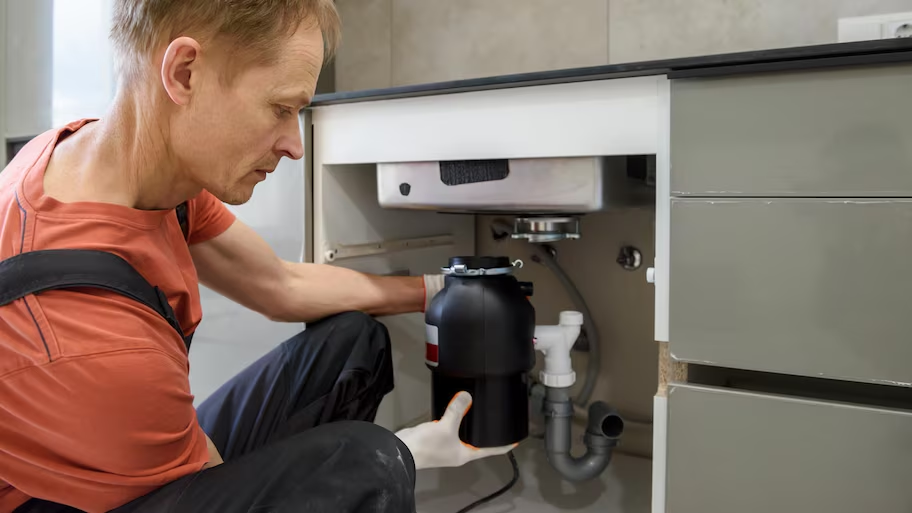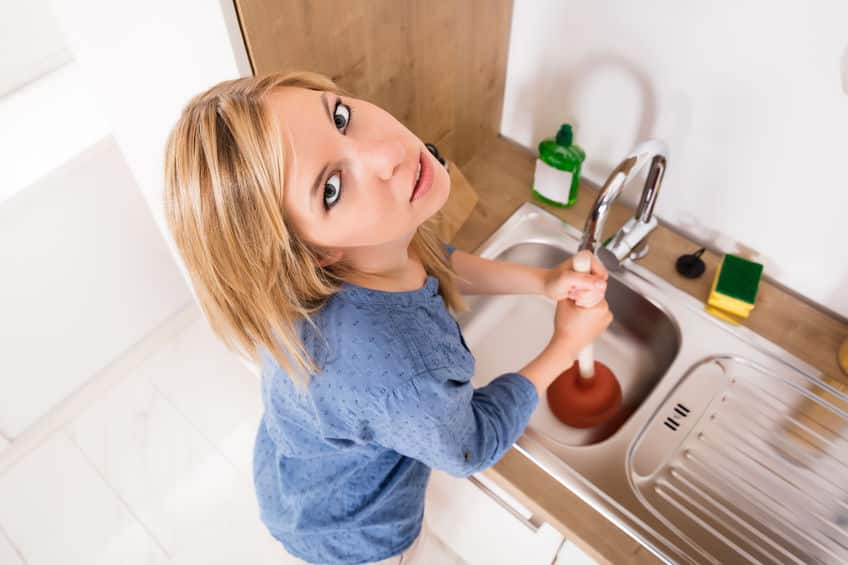Our Definitive Guide to Fixing a Leaky Waste Disposal Unit
Our Definitive Guide to Fixing a Leaky Waste Disposal Unit
Blog Article
The writer is making a few good pointers regarding The Handy Guide To Fixing Your Garbage Disposal Leaking as a whole in the article following next.

Garbage disposals are essential cooking area devices that assist in dealing with food waste successfully. Nevertheless, a leaking waste disposal unit can be an aggravating and messy problem to handle. Thankfully, many leaks can be taken care of easily with a few basic steps. In this article, we will discuss how to fix a dripping waste disposal unit successfully.
Introduction
Garbage disposals are mounted under kitchen sinks and are designed to shred food waste into smaller pieces, enabling it to go through the plumbing system easily. While these gadgets are usually reliable, leakages can occur with time because of wear and tear, loose connections, or damage to the system.
Usual Root Causes Of Leaks in Rubbish Disposals
Worn Seals and Gaskets
Seals and gaskets play an essential duty in preventing water from leaking out of the garbage disposal. Gradually, these parts can wear away, bring about leakages around the disposal unit.
Loose Connections
The connections in between the garbage disposal and the plumbing system can become loosened in time, creating water to leakage out throughout procedure.
Splits or Holes in the Disposal Unit
Physical damages to the garbage disposal, such as fractures or holes in the real estate, can likewise lead to leaks.
Determining the Resource of the Leakage
Prior to attempting to fix a dripping waste disposal unit, it is necessary to identify the resource of the leakage. This can generally be done via aesthetic evaluation or by conducting straightforward examinations.
Visual Evaluation
Check the garbage disposal unit thoroughly for any type of indicators of water leakage. Pay attention to locations around seals, gaskets, and link factors.
Testing for Leaks
One way to test for leakages is by running water with the disposal system and checking for any type of noticeable indications of leakage.
Devices and Products Needed for Dealing With a Dripping Waste Disposal Unit
Prior to beginning the repair work process, gather the necessary devices and materials, consisting of a screwdriver, adjustable wrench, plumber's putty, replacement seals or gaskets, and epoxy or patching product for fixing splits or holes.
Step-by-Step Guide to Repairing a Dripping Garbage Disposal
Turn Off the Power
Prior to trying any repair work, make certain that the power to the waste disposal unit system is shut off to avoid the danger of electric shock.
Find the Leak
Recognize the specific location of the leak and identify the cause.
Tighten up Connections
Utilize a wrench to tighten any kind of loose connections in between the disposal device and the plumbing system.
Change Seals or Gaskets
If the leak is because of used seals or gaskets, eliminate the old elements and replace them with brand-new ones.
Patching Fractures or Openings
For splits or openings in the disposal system, use epoxy or an ideal patching product to seal the damaged area.
Checking the Waste Disposal Unit After Repair Work
As soon as the fixing is total, examine the waste disposal unit by running water through it to ensure that the leakage has been resolved.
Preventive Maintenance Tips to Prevent Future Leakages
To prevent future leakages, it is necessary to do regular maintenance on your waste disposal unit. This consists of maintaining it clean, avoiding placing non-food products or hard objects down the disposal, and occasionally checking for leakages or various other problems.
Verdict
Finally, repairing a dripping waste disposal unit is a relatively straightforward process that can be finished with basic devices and materials. By complying with the steps detailed in this article and exercising preventive upkeep, you can maintain your waste disposal unit in good working condition and avoid expensive repair work in the future.
What to Do About a Leaking Garbage Disposal
A leaking garbage disposal often goes unnoticed until you confront a sopping cabinet, a foul-smelling puddle, or an audible drip-drip-drip from the unit. The fix can be frustrating, too, because the leak can stem from a number of components in the system. Fortunately, with a little sleuthing, you can zero in on the leak and—depending on the exact location—stop the icky oozing and repair the component that caused it. Worst case scenario, if it turns out that the garbage disposal must be replaced, installing a new one is a reasonable do-it-yourself task for those with basic plumbing skills. Read on to keep the cash you’d otherwise hand over to a pro.
Prepare to find the leak
Prior to testing the garbage disposal for leaks, unplug it at the wall outlet and turn off the power from the breaker box to prevent electrical shock. Then insert a watertight sink stopper into your sink drain and wipe the unit dry with a clean cloth. In any handy container, mix a few drops of food coloring into a few cups of water, and pour the dyed water onto the sink stopper to help you locate the leak.
Investigate the source
the top, where the disposal meets the sink drain the side, where the dishwasher hose or main drain pipe connects to the disposal or the bottom of the unit Inspect each of these locations while gliding a light-colored rag over the unit; the dyed water will readily show on the rag and reveal the location of the leak. If a leak isn’t immediately apparent, remove the sink stopper and pour a few more cups of dyed water down the sink drain, then check for leaks again. Leaks near the top of the unit are more likely to show themselves while the sink is plugged, while side and bottom leaks are more noticeable while the sink is unplugged.
The metal sink flange that sits directly inside the sink drain is typically sealed around the top with plumber’s putty (a clay-like sealant) and then secured from under the sink with bolts. If the plumber’s putty deteriorates, or the bolts loosen, the flange can no longer form a watertight seal between the sink drain and the disposal—which could cause a leak at the top of the unit.
To reseal the leaky flange, you must first detach the garbage disposal. Start by loosening the screws securing the main drain pipe to the disposal, then loosen the screws in the metal clamp securing the dishwasher hose to the disposal and detach the drain pipe and dishwasher hose from the disposal. Loosen the screws in the mounting ring that connects the disposal to the metal mounting assembly beneath the sink, then pull down the disposal and carefully set it on a clean, dry surface. Loosen the bolts in the mounting assembly with a wrench, then pull down the mounting assembly and set it near the disposal.

I am very focused on Tips on Fixing a Leaking Garbage Disposal and I'm hoping you appreciated the new blog post. Remember to take a moment to share this blog if you liked it. Many thanks for going through it.
Call Today Report this page